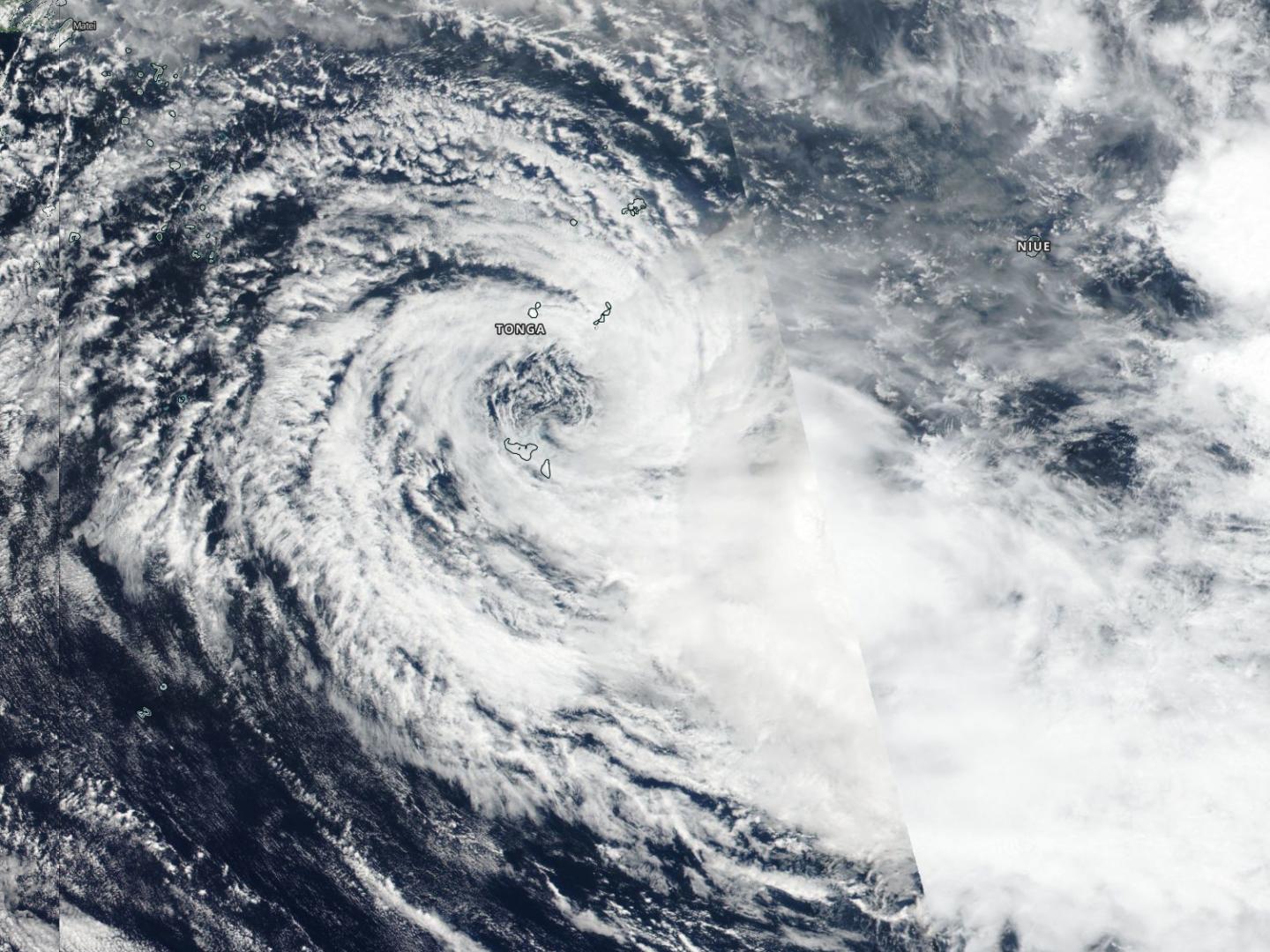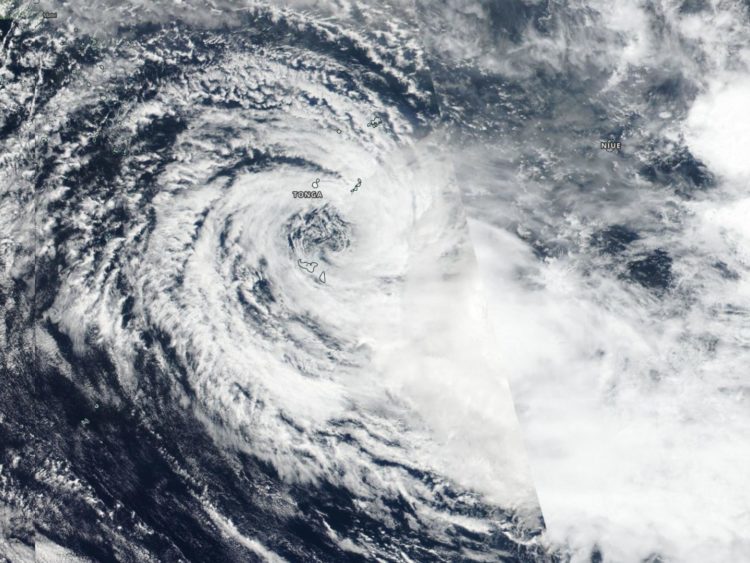
Credit: NASA Worldview, Earth Observing System Data and Information System (EOSDIS)
NASA-NOAA’s Suomi NPP satellite provided forecasters with an image of Tropical Cyclone Sarai and it showed a much weaker storm near Tonga in the South Pacific Ocean.
Visible imagery from NASA satellites help forecasters understand if a storm is organizing or weakening. The Visible Infrared Imaging Radiometer Suite (VIIRS) instrument aboard Suomi NPP provided a visible image of Sarai on Dec. 31.
The shape of a tropical cyclone provides forecasters with an idea of its organization and strength, and NASA-NOAA’s Suomi NPP satellite provided a visible image of Sarai that showed the center of circulation was surrounded by wispy clouds, while the bulk of clouds and showers were pushed to the southeast of the center from outside winds or vertical wind shear. Because the center of circulation was near Tonga, Regional warnings were still in effect for Tonga. A gale warning is in force for Vava’u, Ha’apai, Tongatapu and ‘Eua land areas.
At 4 a.m. EST (0900 UTC), the Joint Typhoon Warning Center issued the final advisory on Tropical cyclone Sarai as it weakened to a depression. Sarai was centered near latitude 20.3 degrees south and longitude 174.3 degrees west, about 259 miles west-southwest of Niue. The storm is moving to the east-northeast with maximum sustained winds 30 knots (34.5 mph/55.5 kph).
Sarai is rapidly weakening and is dissipating under adverse atmospheric conditions.
###
Tropical cyclones and hurricanes are the most powerful weather events on Earth. NASA’s expertise in space and scientific exploration contributes to essential services provided to the American people by other federal agencies, such as hurricane weather forecasting.
By Rob Gutro
NASA’s Goddard Space Flight Center
Media Contact
Rob Gutro
[email protected]
Original Source
https:/





